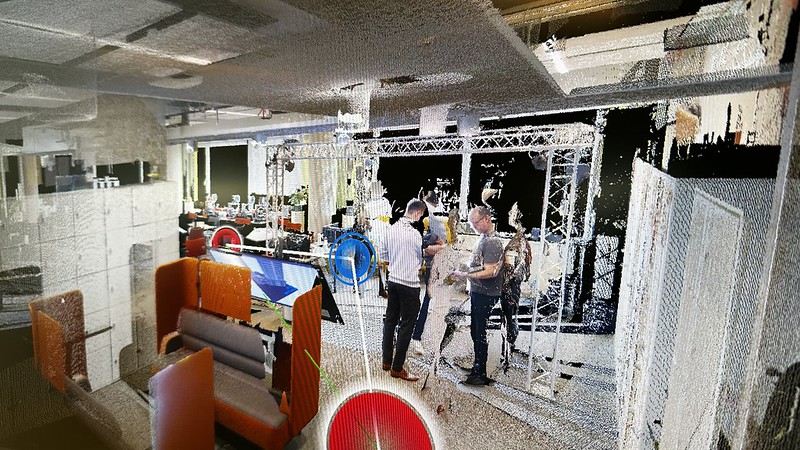Had a fun Friday this week exploring some new kit in the lab. We have few new projects emerging in the lab making use of LIDAR including our digital campus work, some heritage building scanning and our continued work in QEOP implementing a shared living lab environment. Late last year we were fortunate to win some RCIF funding to help kick start these collaborations and were able to purchase a Leica BLK360 and BLK2FLY. Today we had a visit from Chris (Leica UK rep) who accelerated our learning on the kit by spending a few hours with us to introduce the hardware and various bits of excellent software which look like they will really help speed up our workflow.
First up was an overview of building up room / building scans using the BLK360. The hardware is as simple as it gets to set up- unpack, insert charged battery, put device on tripod and power it up. The capture app on the iPad was pretty straightforward to use but I guess the real test will be getting it up and running again when the Leica experience t is not around! There are some really elegant processes for registering and triangulating the scans and I think the workflow tips from Chris on methods for scanning floors will be really helpful in speeding up and improving the accuracy of the scans. Below is a screenshot of a capture from three points in the lab and include a bit of data cleaning - removing reflections from the windows and removing people from the scene.
After some demos of the various bits of software for viewing, analyzing and annotating the scans we moved on to the BLK2FLY. This is device is essentially a BLK360 mounted on a drone doing dynamic registration of the point cloud. It is less accurate than the BLK360 due the nature of the dynamic capture but really simplifies the process of getting scans of large volumes such as buildings. I have been flying a DJI Spark since my Intel days so was familiar with what might be required to fly the BLK2FLY but was surprised as to how easy it was. It has an indoors mode which is really useful for getting familiar with the startup and control process. A group of us are planning to get GVC training in the spring to help us prepare for use outside. The scan below shows a first flight in the cinema which is a nice large volume. The collision detection in our lab was really impressive but it did make flying around a bit of challenge since it was consistently warning of obstacles!
The educational learning materials also sound super interesting and something we will be exploring. Expect to see a few scans on here this year!


